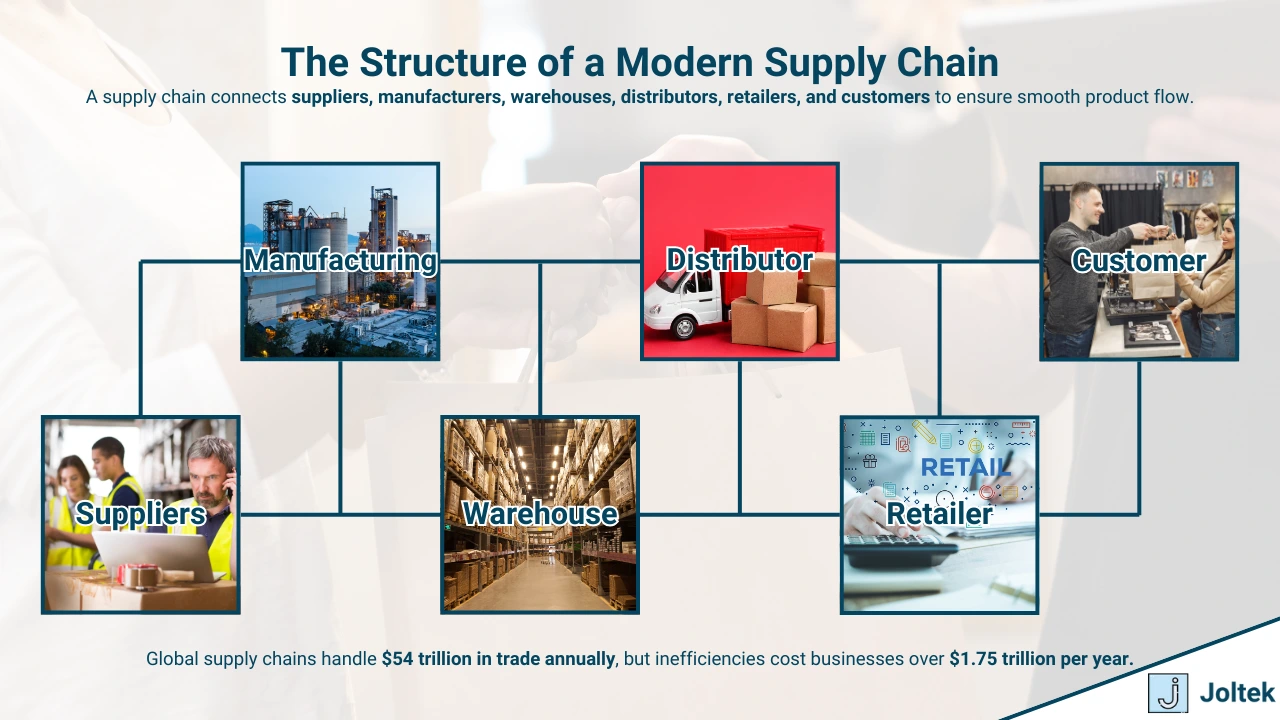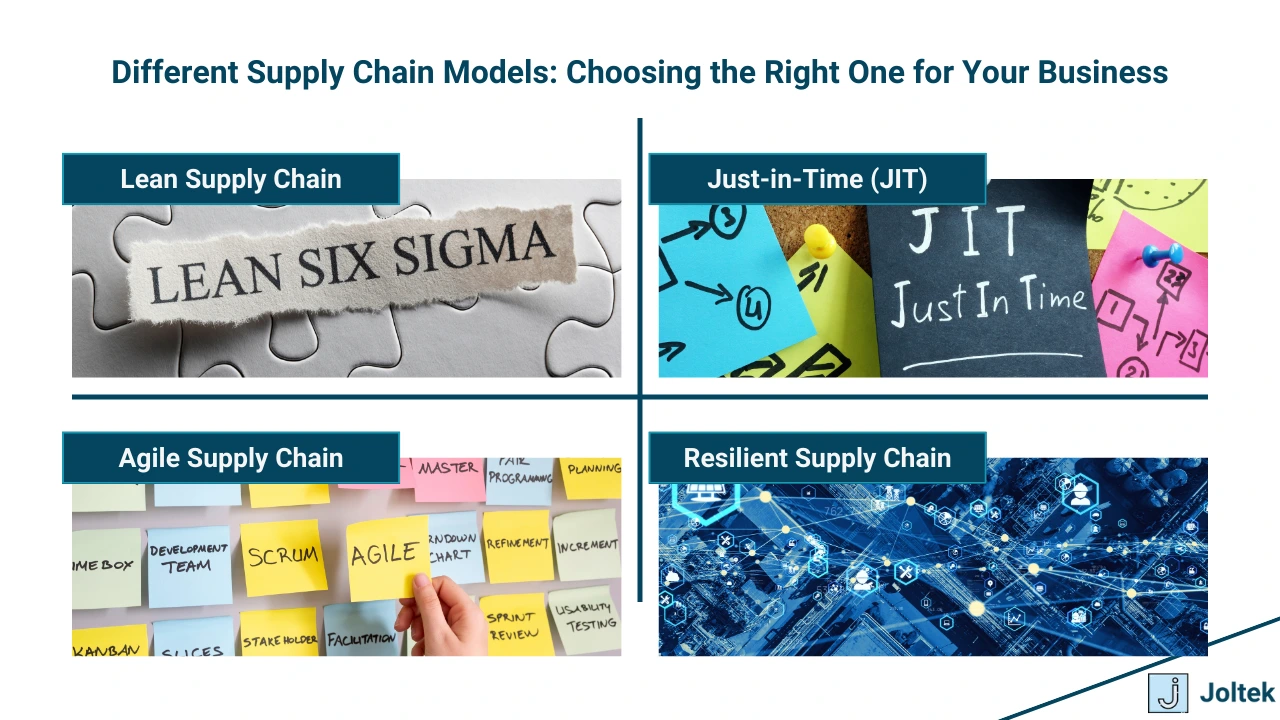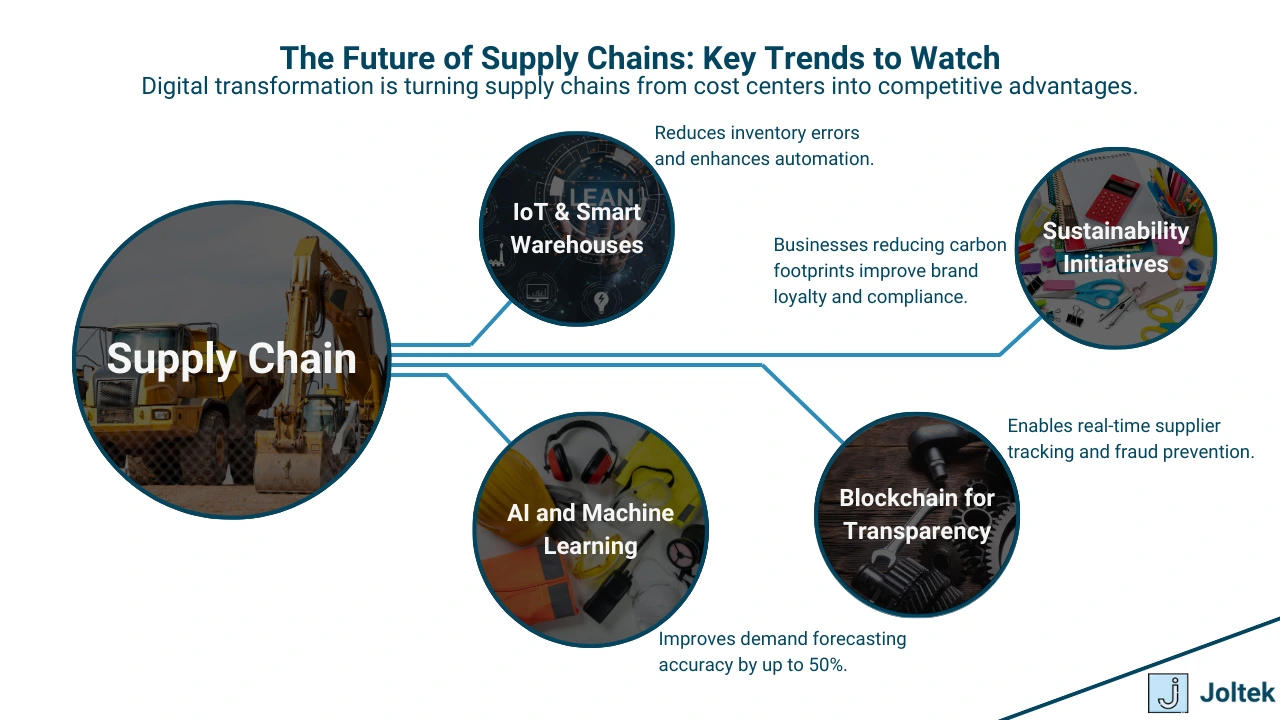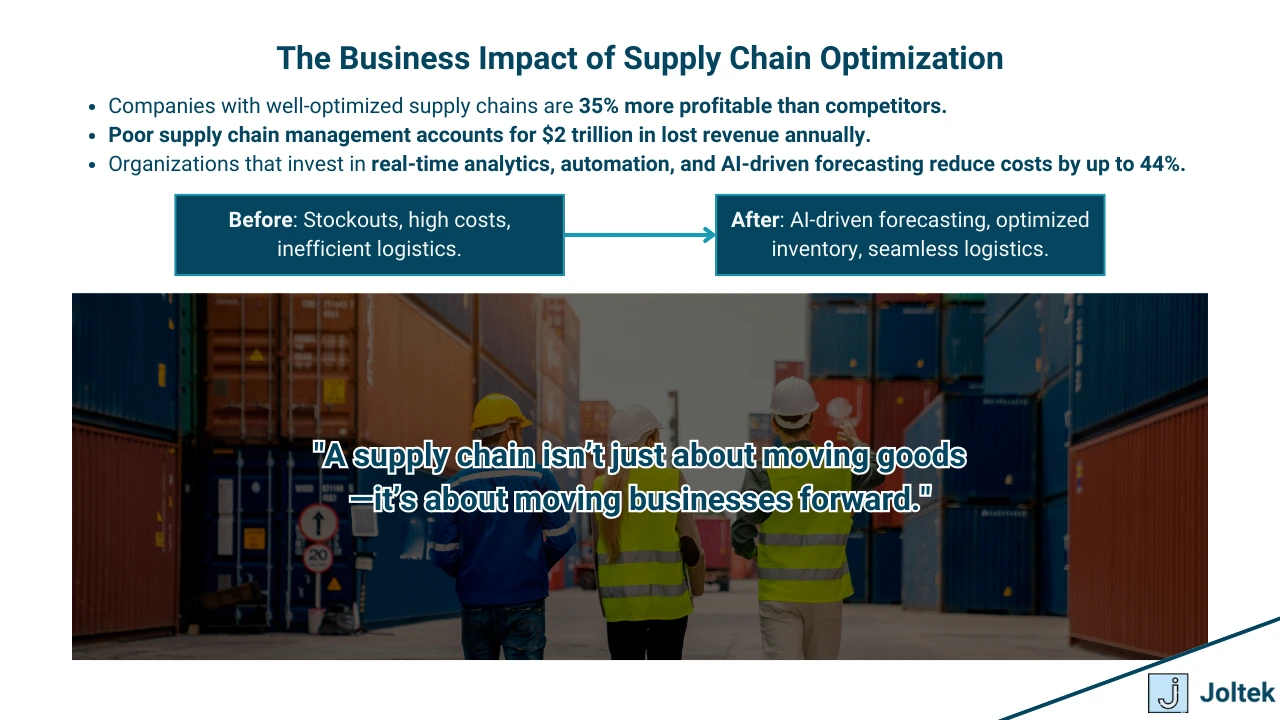Reference: If you’re new to supply chain consulting, be sure to check out our previous post, Supply Chain Consulting: The Key to Building Resilient, Efficient, and Cost-Effective Operations, where we covered the role of supply chain consultants and why businesses increasingly rely on them for operational success.
The modern economy depends on efficient, well-structured supply chains. Whether delivering raw materials for manufacturing, ensuring shelves are stocked in retail stores, or coordinating complex global distribution networks, supply chains are at the core of nearly every business operation. Yet, supply chain disruptions, inefficiencies, and evolving market demands continue to challenge organizations worldwide.

Understanding how supply chains function, the distinctions between supply chain management and logistics, and the different models businesses adopt can help organizations navigate these complexities. With technological advancements and shifting global trends, supply chains are undergoing rapid transformations. Companies that fail to adapt risk falling behind in an increasingly competitive market. This article provides a deep dive into the fundamental aspects of supply chains, their structure, management approaches, and emerging trends shaping the industry’s future.
A supply chain is the end-to-end system that ensures goods and services move from suppliers to manufacturers, distributors, retailers, and finally, to customers. It encompasses a vast network of interconnected processes, resources, and stakeholders, all working together to optimize efficiency, reduce costs, and enhance reliability.
At its core, every supply chain consists of three primary flows:

A well-optimized supply chain ensures these flows operate seamlessly, allowing businesses to reduce waste, lower costs, and meet customer expectations efficiently. However, supply chain inefficiencies remain a pressing issue. Research from the World Economic Forum estimates that poor supply chain coordination costs global businesses over $1.75 trillion annually, largely due to inefficiencies in procurement, inventory management, and logistics.
Each of these components must work in sync to prevent delays, shortages, and excess inventory. The ability to balance supply with demand is one of the biggest challenges in supply chain management.

Although often used interchangeably, supply chain management (SCM) and logistics refer to distinct but related disciplines. Supply chain management is a broad, strategic approach that oversees the entire supply network, while logistics focuses more on the tactical execution of transportation, warehousing, and distribution.
Supply chain management involves the planning, coordination, and optimization of procurement, production, inventory control, and risk management. It ensures that supply chain activities align with business objectives, market demands, and sustainability initiatives. Logistics, on the other hand, deals with the efficient movement of goods—ensuring that shipments are delivered on time, warehousing operations run smoothly, and distribution networks function without bottlenecks.
For instance, a global retailer like Amazon relies on both SCM and logistics. The SCM function is responsible for sourcing products from suppliers, managing supplier relationships, forecasting demand, and optimizing inventory levels. Meanwhile, the logistics function ensures that products move through fulfillment centers efficiently and are delivered to customers within promised timelines.
Businesses that integrate logistics within a well-orchestrated SCM strategy can achieve cost savings of up to 30% in transportation and warehousing expenses, according to a study by McKinsey & Company.
Different industries and businesses adopt supply chain models based on their operational needs, customer demands, and risk tolerance. Here are four of the most widely used supply chain models:

The lean supply chain is designed to minimize waste and maximize efficiency. Inspired by lean manufacturing principles, this model reduces excess inventory, streamlines production, and eliminates unnecessary processes. Companies like Toyota pioneered the lean supply chain through Just-in-Time (JIT) manufacturing, ensuring that materials arrive only when needed, reducing storage costs.
While lean supply chains reduce costs, they are highly sensitive to disruptions. A single supply chain delay—such as the global semiconductor shortage—can halt production and lead to severe financial losses.
Unlike the lean model, an agile supply chain prioritizes flexibility and responsiveness. This model is ideal for industries where demand fluctuates rapidly, such as fashion and consumer electronics. Companies like Zara use agile supply chains to respond quickly to changing trends, restocking popular products within weeks instead of months.
An agile supply chain often integrates real-time data, AI-driven demand forecasting, and rapid logistics capabilities to ensure quick adaptation to market changes.
The JIT model focuses on producing and delivering goods only as needed, minimizing inventory storage. This model reduces carrying costs and improves efficiency, but it requires highly reliable suppliers and logistics partners. Industries like automotive, aerospace, and electronics manufacturing rely on JIT to keep production costs low and reduce waste.
However, JIT supply chains are highly vulnerable to disruptions. A single supplier failure or transportation delay can halt an entire production line.
A resilient supply chain is built to withstand disruptions, adapt to uncertainty, and recover quickly. This model incorporates supplier diversification, redundant inventory, and regional sourcing to reduce dependencies on a single source. Companies like Apple and Tesla have invested heavily in resilient supply chains to mitigate risks from geopolitical tensions, trade restrictions, and supply shortages.
During the COVID-19 pandemic, businesses with resilient supply chains were able to pivot quickly, while others struggled with supply constraints and skyrocketing costs.

Supply chains are evolving at an unprecedented pace. Companies are increasingly adopting technology-driven solutions to enhance efficiency, reduce costs, and improve decision-making.
Supply chains are the foundation of modern business, affecting everything from production efficiency to customer satisfaction. Understanding supply chain components, management strategies, and emerging trends is essential for businesses looking to remain competitive. As global supply chains become more complex, leveraging digital transformation, risk mitigation, and agile strategies will be key to long-term success.
In the next post, we’ll explore The Role of a Supply Chain Consultant and how businesses can leverage expertise to optimize supply chain performance. Stay tuned!